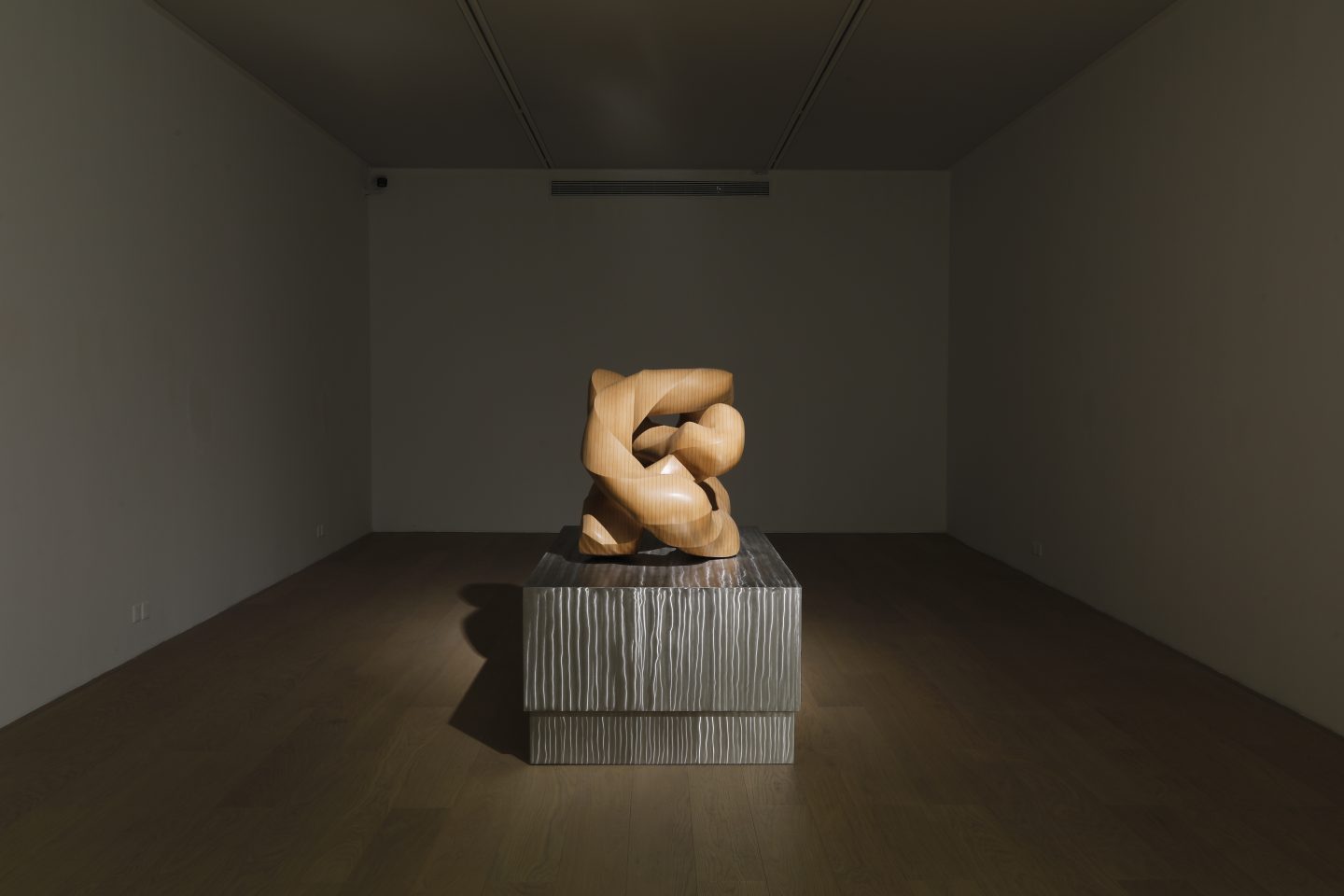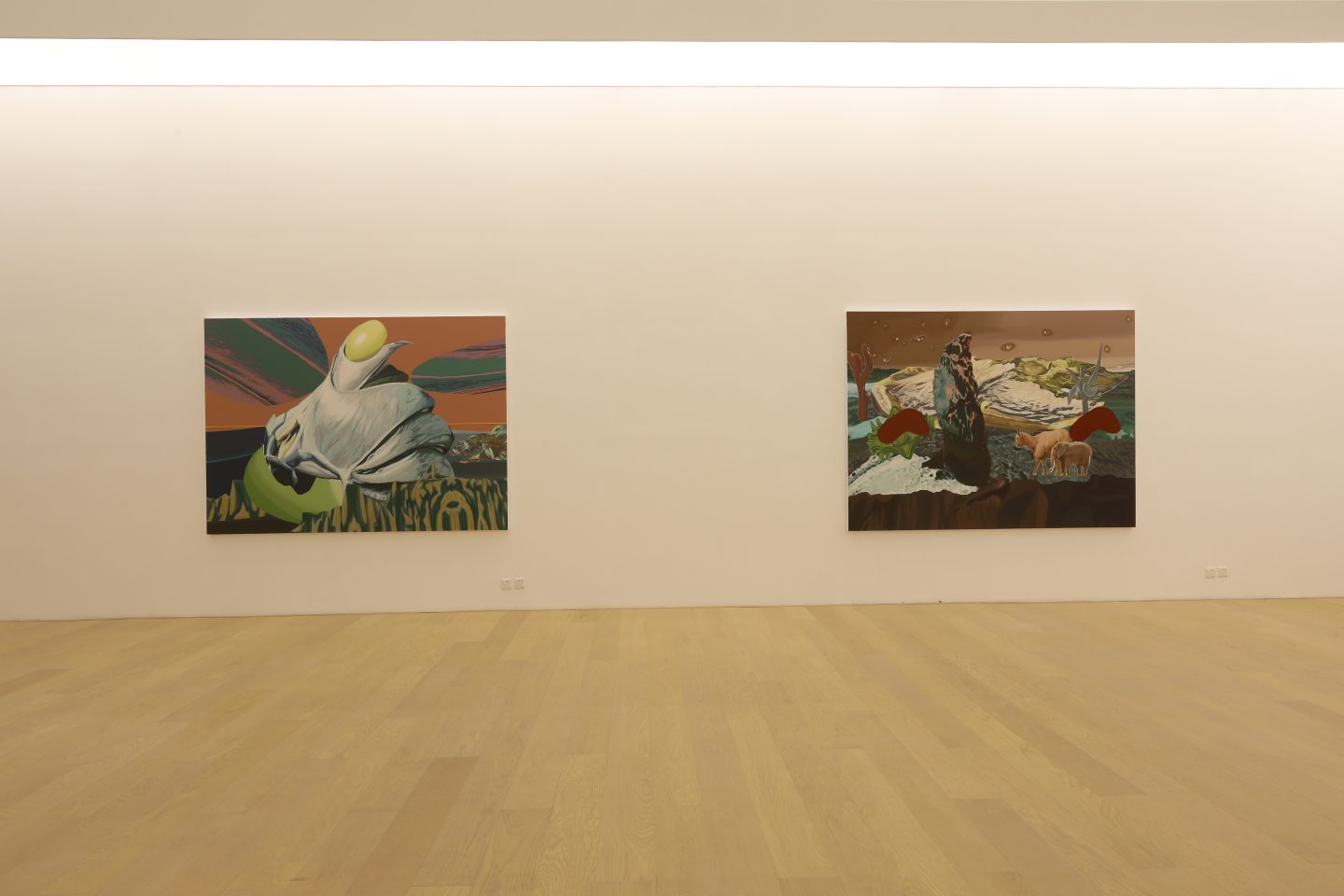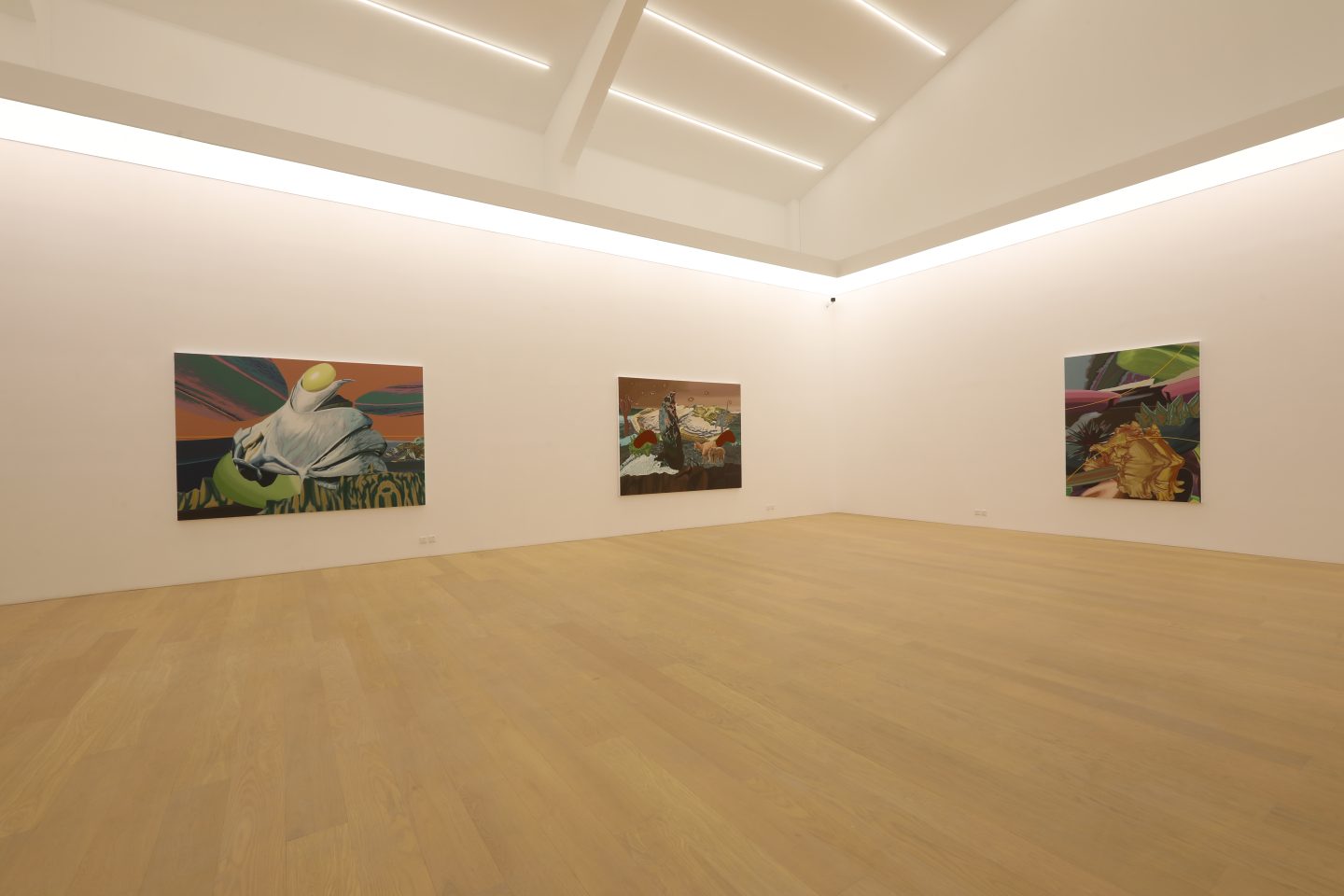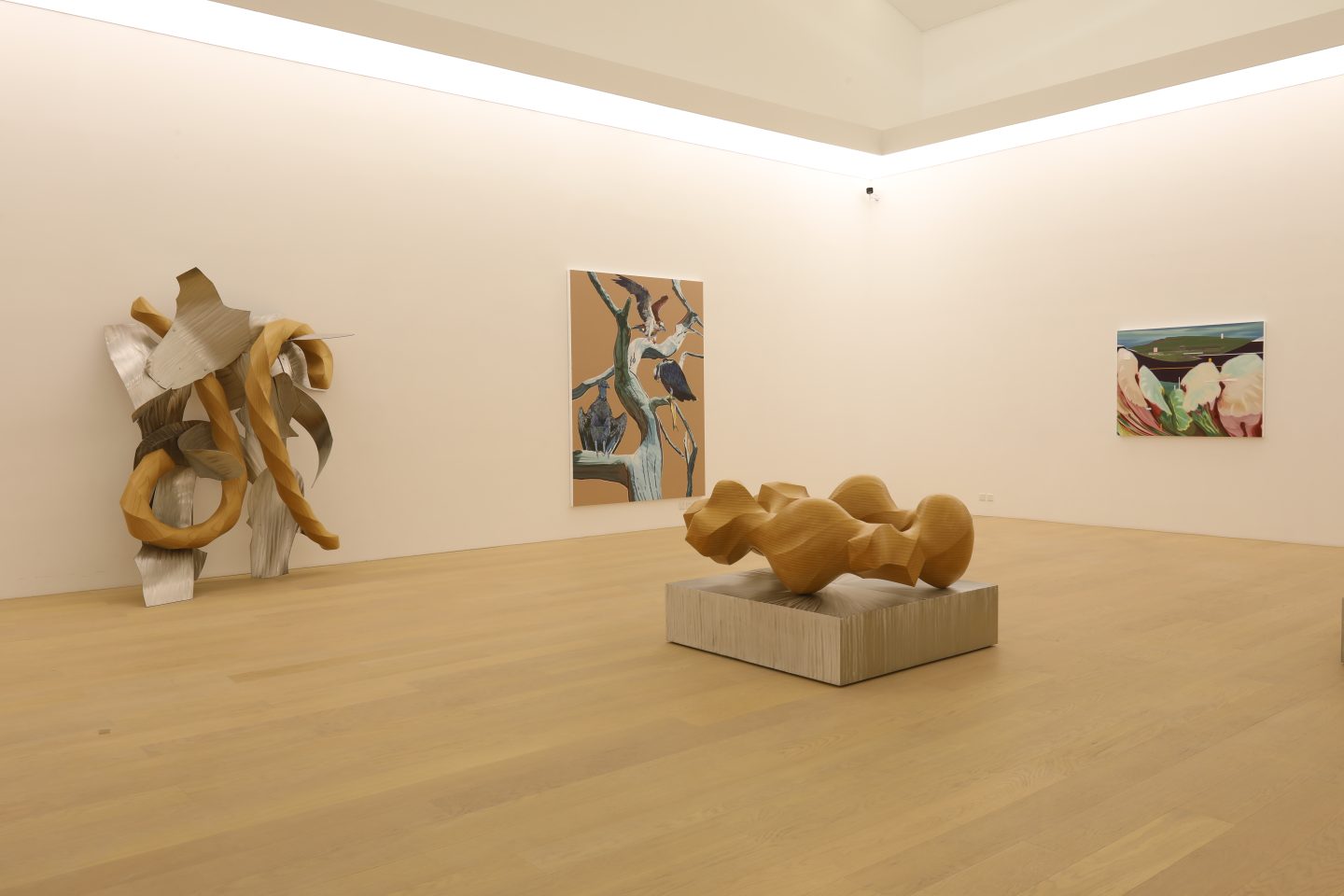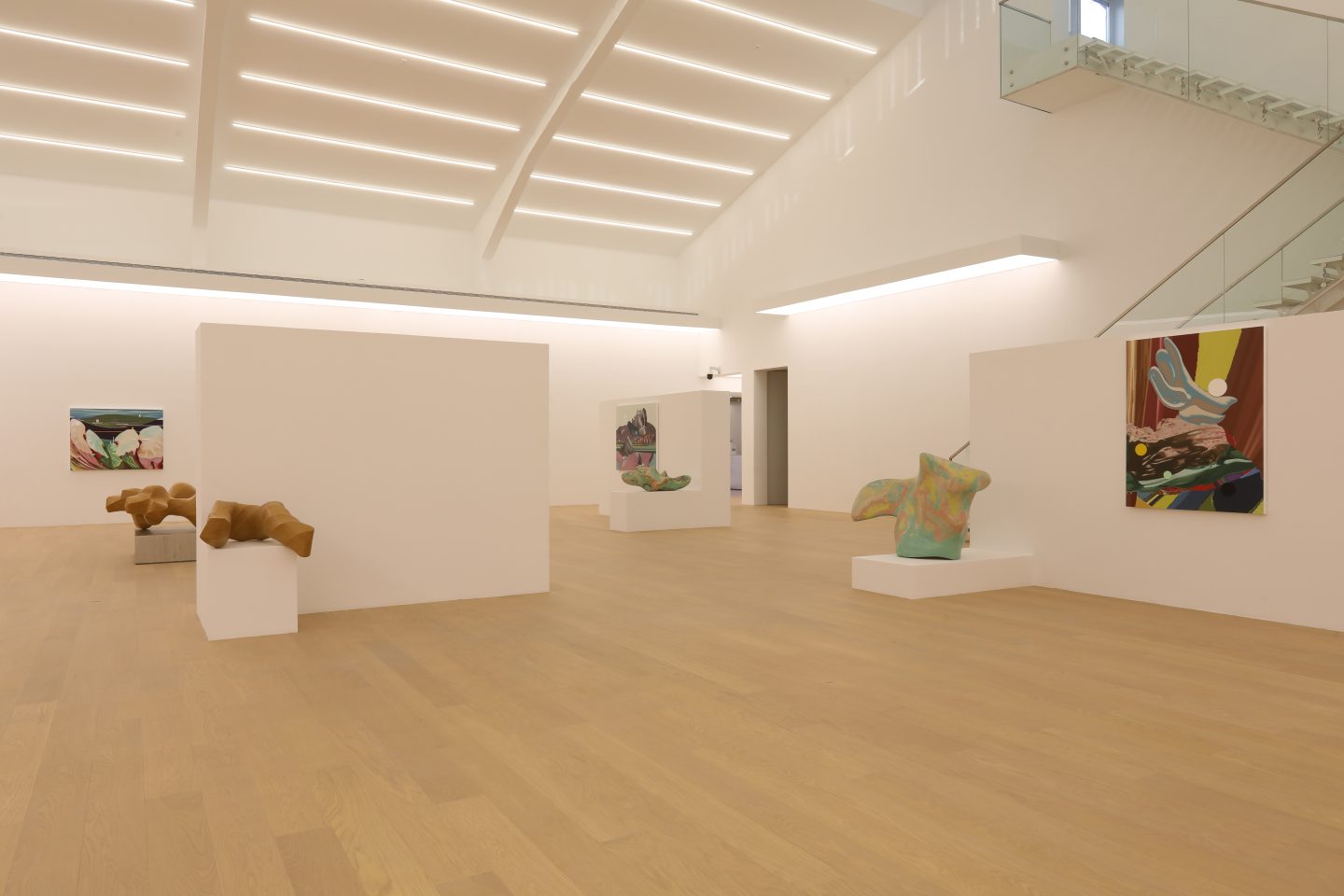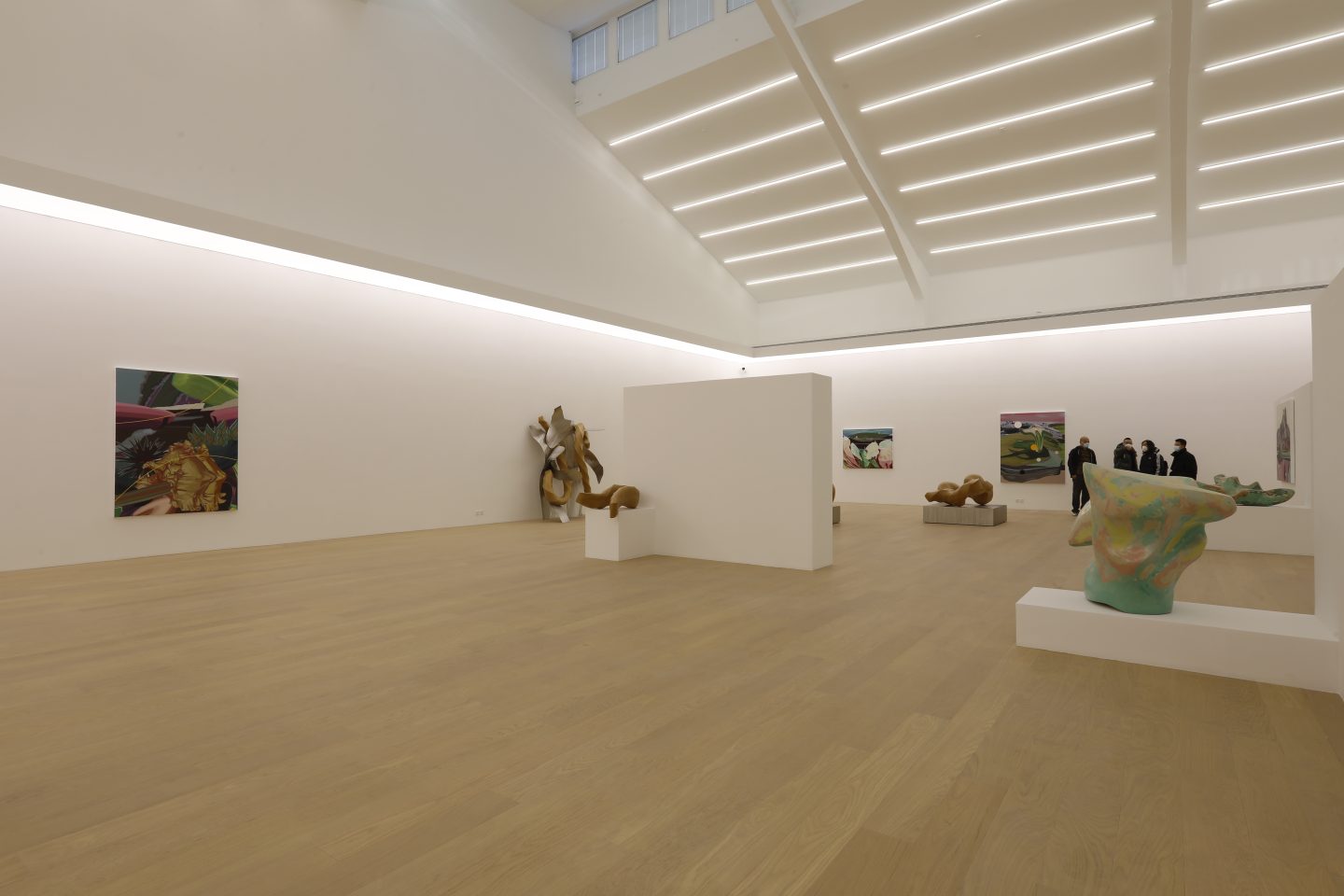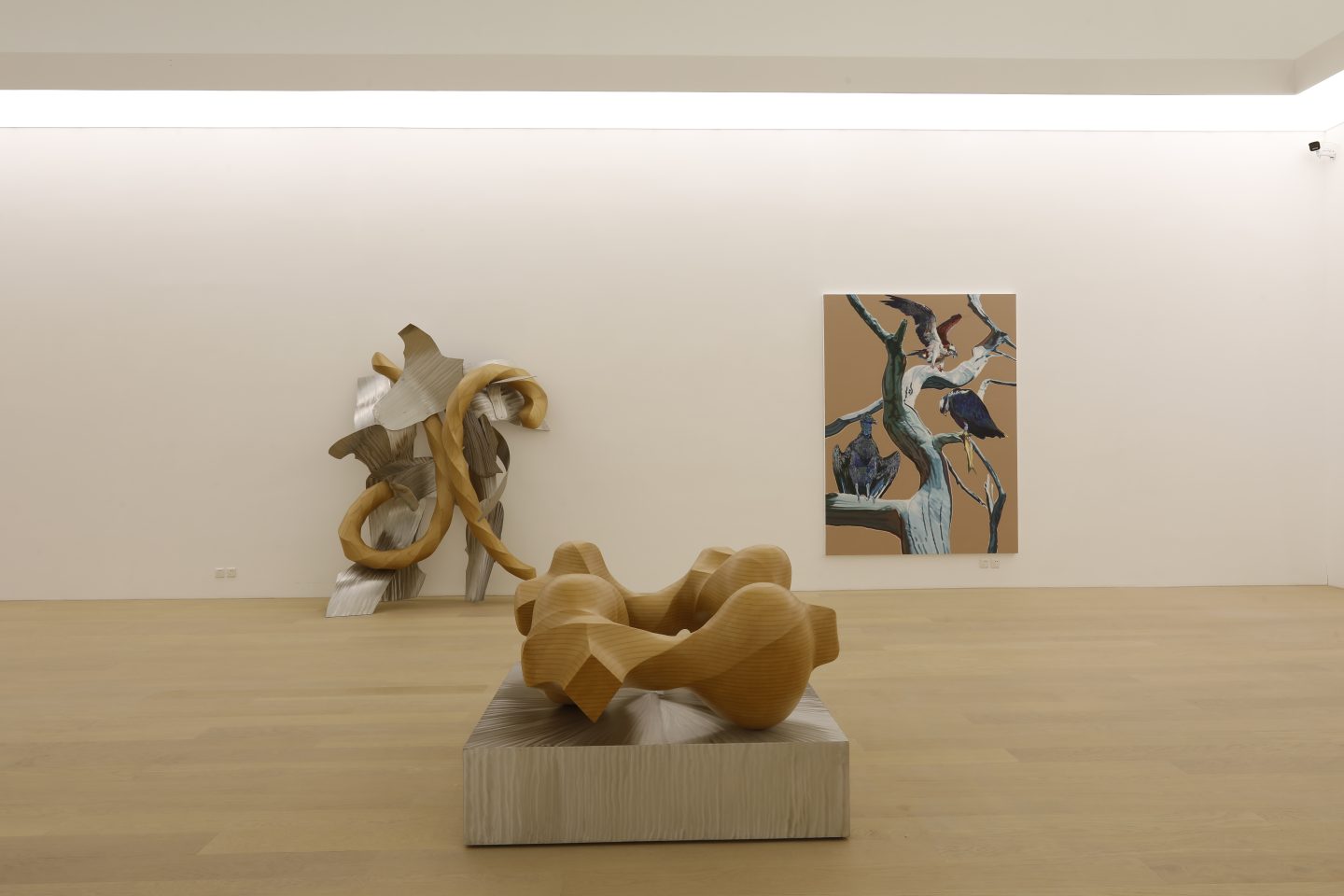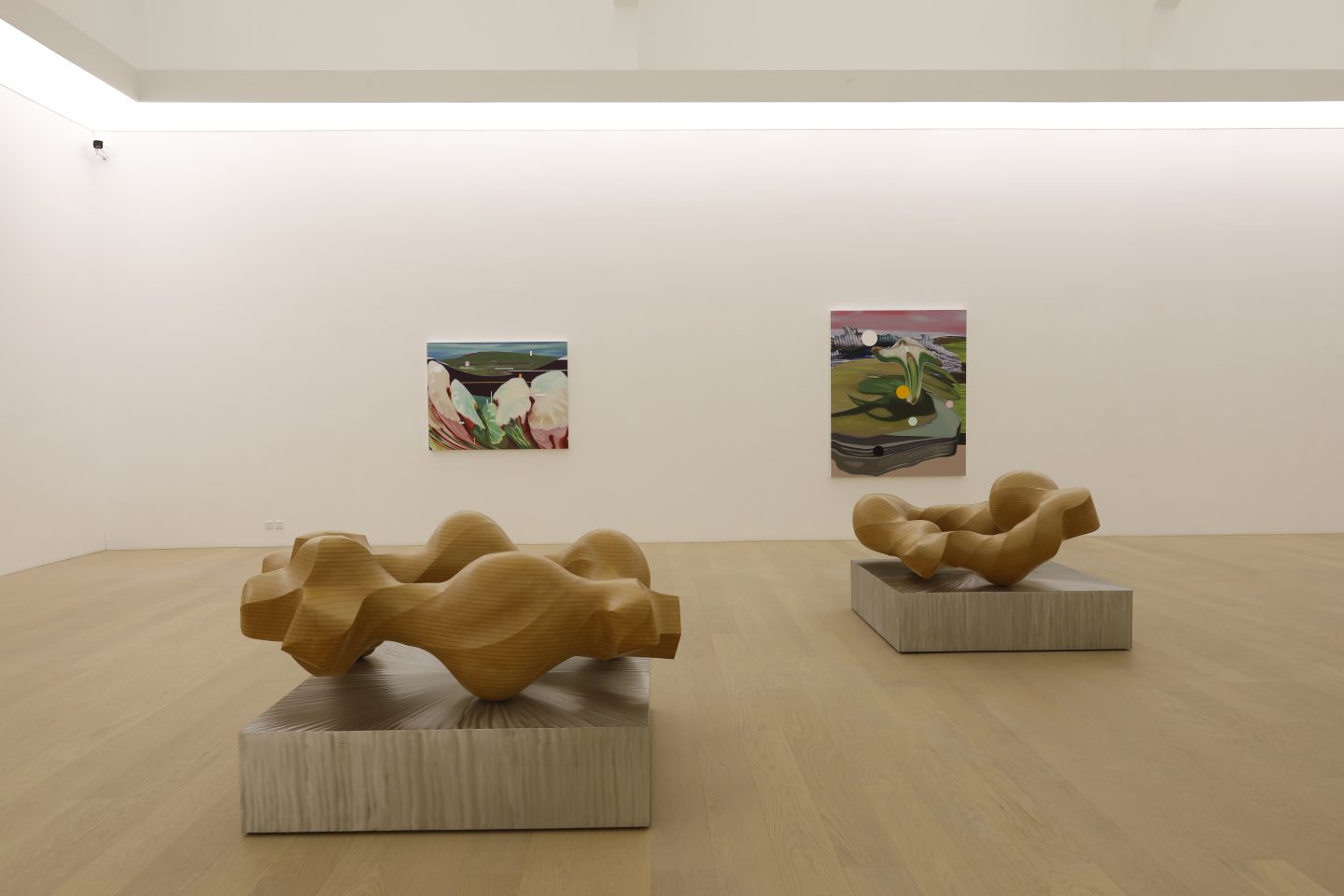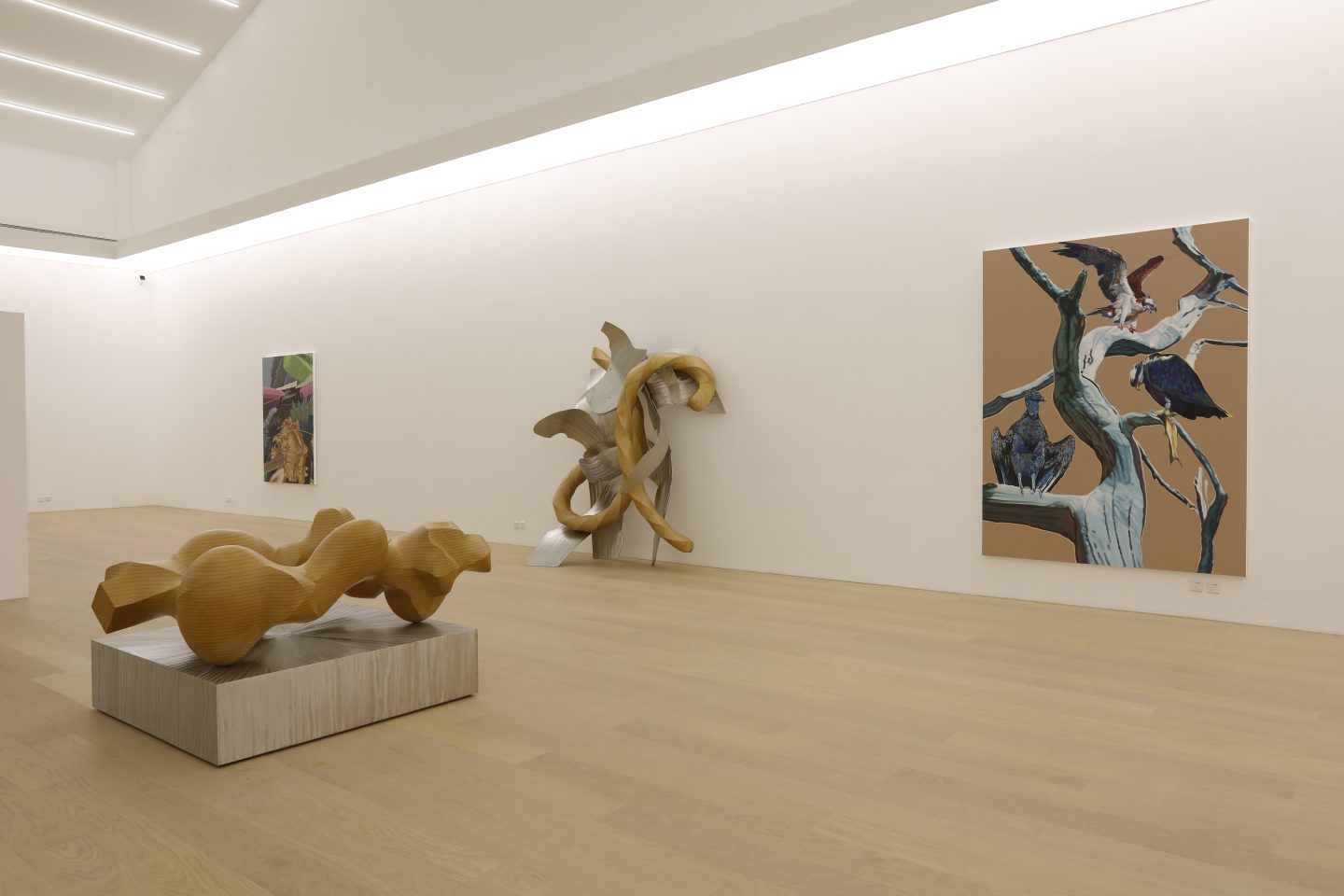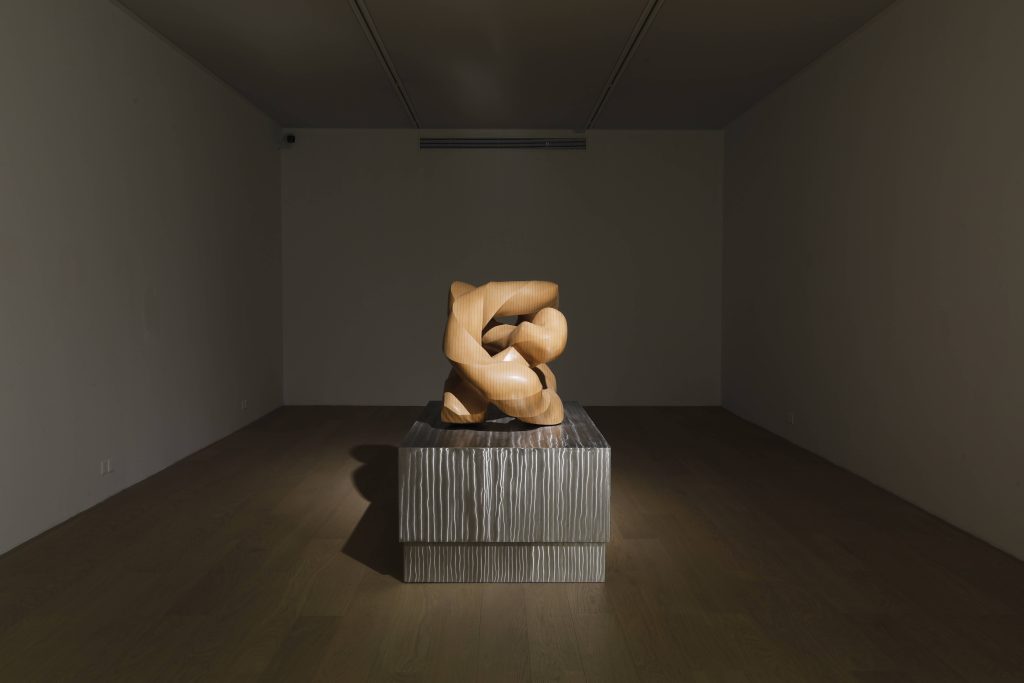Press Release

This exhibition is about how to get objects to flatten out and get along, to emerge as equals. In a changing climate, this is no small thing: you too will have to learn to survive by uniting seaweed, tuna, daisies, and omicron. The network of new actors that emerges in this way is your future. On the artificial earth, you live and things will come to occupy your home. Please don’t forget that you have this mushroominess in you, in fact, anything can become your organ, no, then learn from insects, from the 80-year-old woman who went over the wall to scavenge during the epidemic. You’re supposed to be the cardboard box of cardboard boxes, the omicron of omicrons, that’s right.
Turning behind this white pleated-screen that will have you accidentally stepping on the tail end of your own not-so-human-anymore story, you’ll be fiercely rehearsed by Wang’s set of flatulent works, and like a diplomat, you’ll have to make bottomless political negotiations with a variety of subjects in order to get out of it. His discursive art will take you out of your original morality and aesthetics to something bigger, to judge what you are doing at the moment.
Wang Jianwei pushed his forty years of painting practice into the huge symbolic uncertainty brought about by climate change, took the initiative to let his painting technique be tested to the maximum extent from outside the frame, took the initiative to explore into the depth of space-time and geological history, and, like a gambler, bet all of his methodological belongings to rush into the contemporary art project under climate change. He was forced to simultaneously act like a scientist, philosopher, and artist, and to take on the sky of the Anthropocene all by himself. Paleontology, atmospheric science, geology, landscape science, discursive positivism, painting methodology, image-making procedures, time, space, concepts, toolboxes, park firefighting, art work rhythms, epidemics, rumours of demolition, and so on, have all been flattened into the same plane by him.
By flattening, I mean that the whole does not totalise all its parts. Flatness also means that the identity of the whole does not transcend the parts, but is embedded in each of them; for example, each part of the city can also be levelled with the city, which is an identity of each of its parts. Man is at every point equal to the innumerable organisms which constitute him. The mitochondria in each of his cells are also equal to him; the ontological plane of a cell is also equal to the ontological plane of man.
Wang Jianwei’s group of flattist paintings and sculptures, to be exhibited at Tang’s Beijing First Space, will be based on the theme of ‘emergence’. Emergence is the process by which the whole is flattened to the same level as its parts and then interacts to create something entirely new. The content of the paintings is thought to emerge in this way. Wang Jianwei handles his art objects discursively, and through his flattening strategy, he forces the viewers to think about their own status in the biosphere when they are confronted with other species and objects, so as to train their ethical resilience, and to be calm enough in the face of the anthropocene, or even in the face of humiliating status draws with other species or objects. This kind of flattist ethical resilience will be the lifebelt of humanity under climate change.
–Lu Xinghua (Philosopher, Curator)
Artworks
Emergent
Oil on canvas
Chordata
Mixedmedia—Stainlesssteel,wood,fluorocarbonpaint
200L×100W×140Hcm
Emergent No.4
Mixed media—Stainless steel, wood, fluorocarbon paint
150L × 130W ×160H cm
